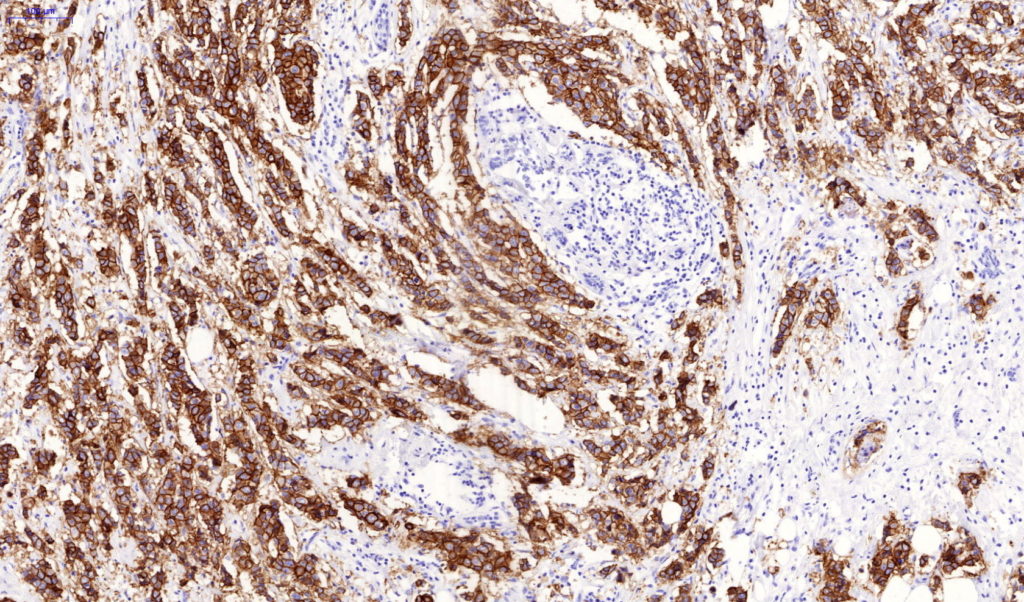Rabbit Monoclonal Antibody
C-erbB2 (also called Her-2/neu, ERBB2 or neu) is a transmembrane receptor tyrosine kinase. HER-2 is considered as the target oncogene driving the amplification, so that its activation will causes malignant transformation and increases the malignant potential (cell proliferation, invasiveness etc.) of the cells. Amplification of C-erbB2 gene invariably leads to over-expression of its protein product. Over-expressed C-erbB protein disturbs the HER-receptor family signalling networks, i.e. signaling mediated via EGFR receptor
Availability:
| Catalog No. | Contents | Volume |
| ILM0110-C01 | C-erbB-2 | 0,1 ml concentrate |
| ILM0110-C05 | C-erbB-2 | 0,5 ml concentrate |
| ILM0110-C1 | C-erbB-2 | 1,0 ml concentrate |
Intended use: For Research Use Only
Reactivity: Human, others not known
Clone: MXR011
Species of origin: Rabbit
Isotype: IgG
Control Tissue: Breast carcinoma
Staining: Membranous
Presentation: Supernatant contain 15mM Sodium Azide
Application and suggested dilutions:
Pre-treatment: Heat induced epitope retrieval in 10 mM citrate buffer pH6.0 for 20 minutes is required for IHC staining on formalin-fixed, paraffin embedded tissue sections.
- Immunohistochemical staining of formalin-fixed, paraffin embedded tissue section (dilution up to 1:100-1:200)
The optimal dilution for a specific application should be determined by the investigator.
Note: Dilution of the antibody in 10% normal goat serum followed by a Goat anti-Rabbit secondary antibody-based detection is recommended.
Storage & Stability: Store at 2-8 °C. Do not use after expiration date printed on the vial.
Reference:
- Owens, MA Horten, BC, Da Silva MM. Her2 amplification ratios by fluorescence in situ hybridization and correlation with immunohistochemistry in a cohort of 6556 breast cancer tissues. Clinical breast cancer, 2004,5(1) 63-69
- Gibbons-Fideler IS, Nitta H, Murillo A et al. Identification of Her2 immunohistochemistry-negative fish-amplified breast cancers and their response to anti-her2 neoadjuvant chemotherapy. Am J Clin Pathol, 2019, 151(2) 176-184

